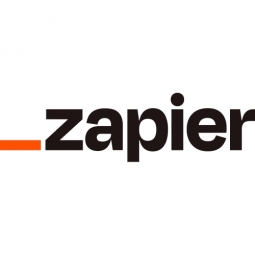Efficiency Boost: How Webhooks Save Hours Every Week
- Application Infrastructure & Middleware - Event-Driven Application
- Platform as a Service (PaaS) - Application Development Platforms
- Cement
- Equipment & Machinery
- Sales & Marketing
- Warehouse & Inventory Management
- Leasing Finance Automation
- Time Sensitive Networking
- System Integration
Webhooks, though often overlooked, are a powerful tool for automating tasks and streamlining workflows. They act as a bridge between different applications, sending information from one app to another. Despite their potential, they can appear complicated due to their long URLs and cryptic descriptions. This case study focuses on how different companies have utilized webhooks to automate their processes and save significant amounts of time. For instance, MOBIT, a mobile messenger and marketing automator, found that certain features they needed were not accessible through the app's API. This was not just an inconvenience, but a significant issue as they had about sixty active Zaps that automated all aspects of their business. Similarly, Customer.io, an app engagement platform, found that some of the tools they relied on did not have direct integrations with Zapier, their automation platform. Squared Up, an application monitoring solution, needed a more efficient way to post new blogs and content across social media channels. Lastly, obo. Agency, a marketing and sales consulting firm, had to create connections between custom systems and applications like Salesforce and HubSpot for their clients.
The customers in this case study are diverse, ranging from a mobile messenger and marketing automator to an app engagement platform, an application monitoring solution, and a marketing and sales consulting firm. MOBIT uses webhooks to automate all aspects of their business, from managing leads to sending notifications. Customer.io uses webhooks to automate messages to customers for marketing and growth teams. Squared Up uses webhooks to automate time-consuming tasks like social media posts and to relieve their developers from mundane tasks. obo. Agency uses webhooks to create connections between custom systems and applications like Salesforce and HubSpot for their clients.
Webhooks provided the solution to these challenges. For MOBIT, webhooks became a necessity. When a customer filled out a contact form or requested a demo, one of Zapier's webhooks caught the response and fed it into Trello, creating a new card for the client. Webhooks also helped manage their customers. When a customer decided on a subscription, MOBIT used Zapier to alert the entire team on Slack. For Customer.io, as their data practices grew in sophistication, they started using webhooks to send event data like downloads, newsletter subscriptions, and event attendance to their data warehouse. Squared Up used Zapier's webhooks to connect their content to social media. When a blog was published, a webhook fired which Zapier caught and processed, posting the blog's title and link to Facebook, Twitter, and LinkedIn. obo. Agency added webhooks to an API if the API wasn't already equipped with them. Once a client's homebrewed API had webhooks, it was ready for a bit of magic. With webhooks, Zapier intercepted new contacts for obo's clients, sending it to a Salesforce or HubSpot.
Related Case Studies.











